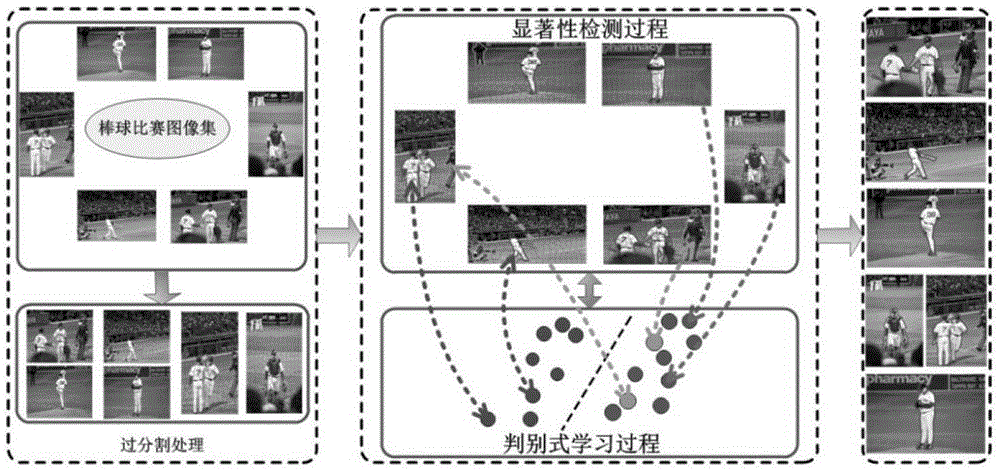Cooperative Segmentation Method of Object Foreground by Joint Saliency Detection and Discriminative Learning
A collaborative segmentation and discriminative technique, applied in the field of image processing
- Summary
- Abstract
- Description
- Claims
- Application Information
AI Technical Summary
Problems solved by technology
Method used
Image
Examples
Embodiment Construction
[0014] In order to make the object, technical solution and advantages of the present invention clearer, the present invention will be further described in detail below in conjunction with specific embodiments and with reference to the accompanying drawings.
[0015] The present invention proposes a target foreground cooperative segmentation method of joint saliency detection and discriminative learning to solve the problem of strong background consistency of multiple images with similar targets. The final target regions are the shared salient regions in the image dataset, while those non-salient regions and salient but non-shared regions will be used as background regions. The present invention can effectively detect salient regions through low-rank matrix decomposition and remove the influence of background consistency, and discriminative learning can extract common salient regions. The low-rank matrix factorization and discriminative learning process are jointly optimized un...
PUM
 Login to View More
Login to View More Abstract
Description
Claims
Application Information
 Login to View More
Login to View More - R&D
- Intellectual Property
- Life Sciences
- Materials
- Tech Scout
- Unparalleled Data Quality
- Higher Quality Content
- 60% Fewer Hallucinations
Browse by: Latest US Patents, China's latest patents, Technical Efficacy Thesaurus, Application Domain, Technology Topic, Popular Technical Reports.
© 2025 PatSnap. All rights reserved.Legal|Privacy policy|Modern Slavery Act Transparency Statement|Sitemap|About US| Contact US: help@patsnap.com



